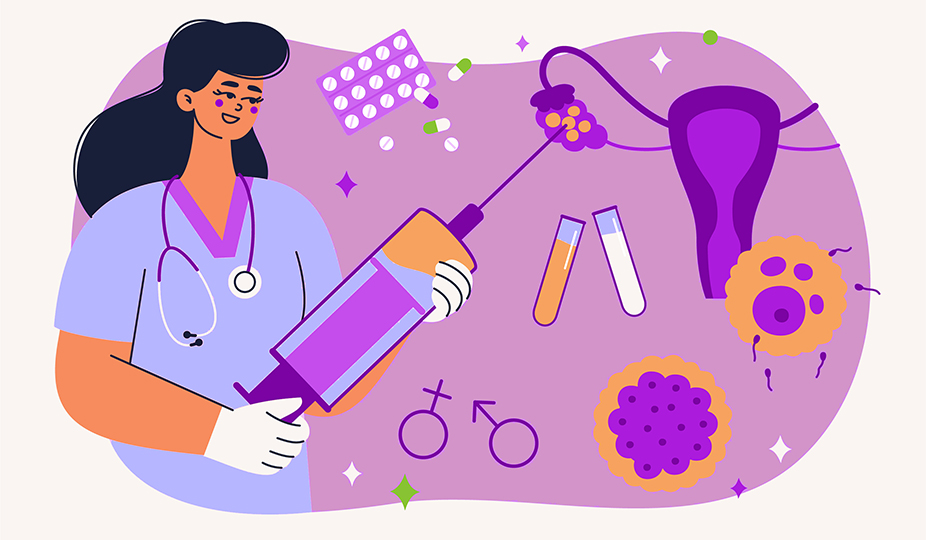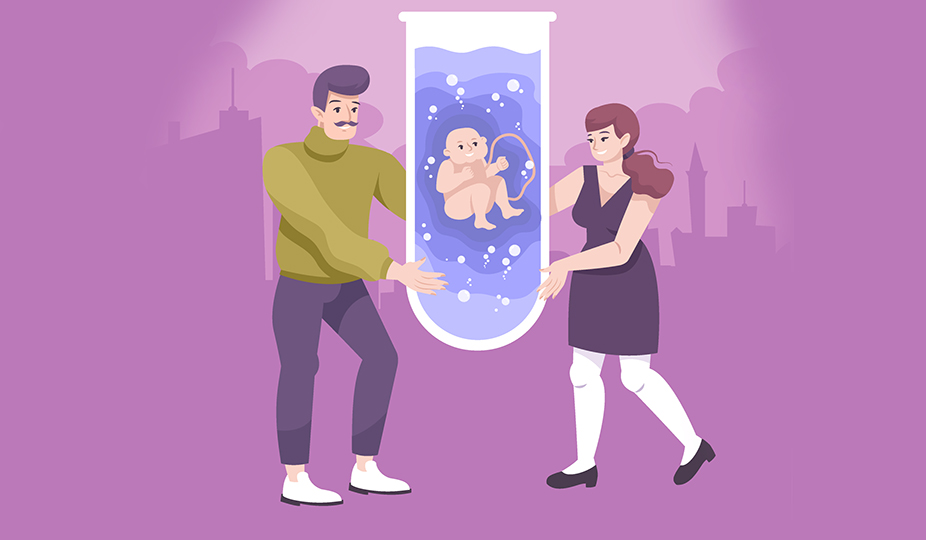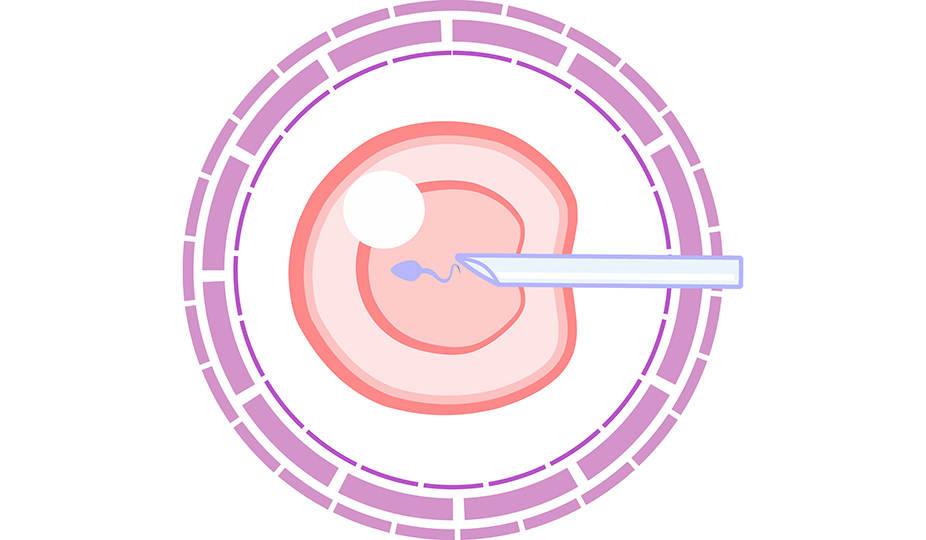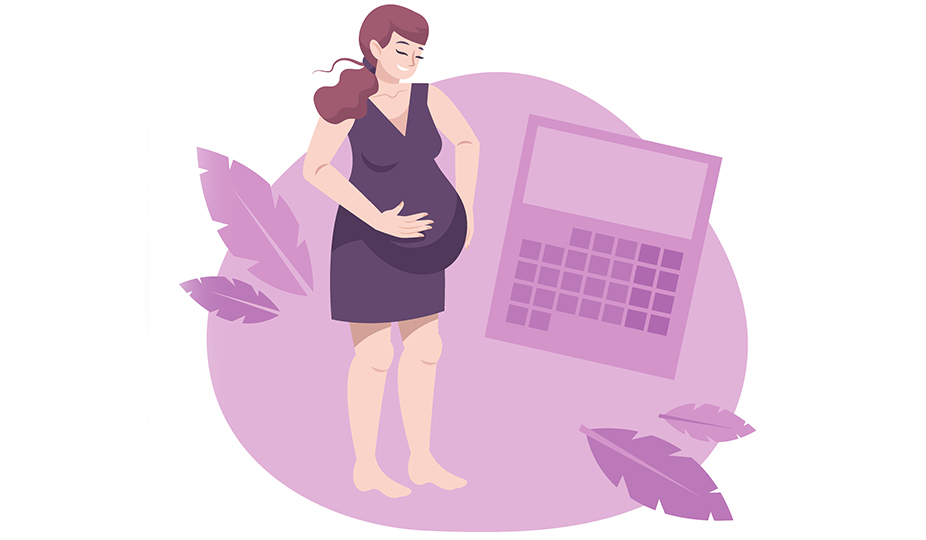Does a Surrogate Mother Share Blood With the Baby? – Dispelling Myths
Surrogacy is a topic that still raises many questions and even controversy. One of the most common concerns is whether a surrogate mother shares blood with the baby. The short answer is – no. They have different bloodstream systems and all nutrients are transferred via the placenta. But let’s fully debunk this myth by explaining the surrogacy process in detail.

Let’s find out how the process of childbearing works, who the biological parents are, and what the relationship of a surrogate mother to the child is. Answers to these and other questions will help you better understand motherhood’s complex but wonderful process. So, sit back, and let’s talk about it.
What is Surrogacy?
Surrogacy is a reproductive technology whereby a woman bears and gives birth to a child for another couple or person who is unable to get pregnant and deliver. People choose this method when traditional ways of conceiving fail or there are medical conditions that make pregnancy difficult.

Surrogacy is an alternative for people who are incapable of having children. For example, due to the absence of a uterus, serious medical conditions, or the inability to get pregnant due to fertility problems. In this process, the surrogate mother usually has no biological connection to the child. The baby can be conceived through in vitro fertilization (IVF) using the parents’ eggs and sperm, or donor materials.
A surrogate mother performs a pivotal role in the childbirth process. She assumes physical and emotional responsibility for bearing a baby for all 9 months. Importantly, a surrogate mother doesn’t take on the role of a child’s mother after the birth. Her mission is only to bring the baby to term.
The process of surrogacy is complex and requires detailed legal documentation to protect the interests of all parties. The parties must sign an agreement in advance that clearly states that the child is handed over to the biological parents after birth. A surrogate mother fulfills her role willingly and within the contract, which regulates all stages – from medical procedures to financial aspects.
How Does Surrogacy Work?
Surrogacy can vary depending on the genetic material used to conceive a child. The relationship between the surrogate mother and the intended parents is also crucial. There are two main types of surrogacy: traditional and gestational. Here’s how they differ.

Traditional surrogacy
In this case, the surrogate mother uses her eggs. It means she is the child’s biological mother, as her egg is fertilized by the father’s (or donor’s) sperm. Such arrangements are less commonly used due to legal and ethical implications, as the surrogate mother has a genetic link to the baby, and questions arise about parental rights.
The process goes like this: the father’s or donor’s sperm gets used to fertilize the surrogate mother’s egg. The embryo is then implanted into the uterus.
Advantages:
- It is an option for couples where the woman is unable to have children due to absent or non-functional ovaries or uterus. It is also fit for gay couples who want their surrogate to be an egg donor and save costs on the program.
- It can work with any of the techniques – IUI or IVF.
Disadvantages:
- A surrogate mother may have an emotional connection to the baby because she is the child’s biological mother.
- There are legal complications, as a mother can claim rights to the child.
- It is prohibited by law in some countries, e.g. Italy, France, Germany, Austria, Sweden, Norway, Switzerland, and Spain.
Gestational surrogacy
This is the most common type when a surrogate mother has no genetic relationship with the baby. In this case, the biological mother’s egg (or donor egg) is fertilized by the father’s sperm, and the embryo is implanted in the surrogate mother’s uterus. She only bears the child, having no biological relationship to it.
Gestational surrogacy excludes the surrogate’s parental rights. After the birth the child becomes part of the biological parents’ family.
The gestational method applies when a woman has serious uterine conditions, congenital anomalies, or frequent miscarriages. It is worth noting that egg donors are thoroughly tested, so you can be confident in your choice. Check out this article about the requirements for donors to determine this.
Advantages:
- A surrogate mother has no genetic connection to the child.
- Legally, everything is much simpler.
Disadvantages:
- It requires the use of in vitro fertilization technologies (IVF).
- It is more expensive and time-consuming because doctors either have to synchronize cycles of the egg donor and surrogate to use fresh eggs, or imply egg/embryo freezing.
How Does the Surrogacy Procedure Take Place?
Preparation

First of all, the biological parents and the surrogate mother undergo medical examinations. The biological parents donate sperm and eggs (if necessary), and the surrogate mother is checked for her ability to bear a pregnancy and for the absence of medical problems that could interfere with the normal development of the child. The woman also undergoes psychological counseling to understand the emotional aspects of the process, as her role in this process is very important.
IVF

The next step is in vitro fertilization. The biological mother’s or donor’s egg is fertilized with the father’s or donor’s sperm in a laboratory. This process creates embryos that are tested for quality and viability. The best embryos are then picked for further transfer.
Embryo transfer

An embryo that develops successfully is transferred to the uterus. The transfer procedure takes place through the cervix, using a special catheter. During this process, the surrogate mother must be prepared with hormonal drugs that stimulate the uterus to accept the embryo.
Confirmation of pregnancy

A few weeks later, the woman takes a pregnancy test to confirm the procedure’s success. If the result is positive, regular medical examinations begin to monitor the child’s development and the surrogate mother’s health.
Preparation for childbirth

Throughout the entire pregnancy period, the woman undergoes regular medical examinations. At the end of the term, she prepares for childbirth, which can be natural or by cesarean section, depending on medical indicators and needs.
Delivery

When a child is born, he or she is immediately handed over to the biological parents. The surrogate mother has no rights to the child after the birth, as this is clearly regulated by the legal agreements signed before the process begins.
Does a Surrogate Mother Share Blood With the Baby?
This question concerns an important physiological process that takes place during pregnancy. A surrogate mother, like any other woman bearing a child, doesn’t share her blood with the baby, but there are certain connections between their blood circulations. Let’s take a look at how this process works through some frequently asked questions:
How does blood circulation work during pregnancy?
The main organ through which the exchange between mother and child takes place is the placenta. This is an organ that develops only during pregnancy. It is located in the uterus and connects the blood vessels of the mother and the fetus.
The surrogate mother’s blood and the baby’s blood circulate separately. They don’t mix directly because the placenta has a barrier that prevents them from coming into direct contact.
How does the exchange between mother and child take place?
Oxygen, nutrients, and metabolic products (e.g., carbon dioxide) are exchanged through the placenta. The mother’s and fetus’ blood flows through different vessels, but very close to each other, allowing for the efficient transfer of these substances.
The mother’s antibodies can also pass through the placenta to protect the baby from certain infections in the first year of life. However, this doesn’t mean that the mother’s blood mixes with the baby’s.
Does a surrogate mother share blood with the baby?
The placenta has a special structure that prevents the blood from mixing. This is important to avoid immune conflicts when the mother’s body perceives the fetus as a foreign body.
The placenta has many thin blood vessels that work as a filter. They allow nutrients and gases to pass between the organisms, but prevent blood from mixing.
What Does the Surrogate Mother Share with the Child?
Although the woman doesn’t pass on her genetic information, her body actively supports the baby’s development, creating conditions for its healthy growth and well-being. Numerous physiological mechanisms play an important role in this process, through which the child receives the necessary resources for its existence. Among them are:
Oxygen and nutrients
The main exchange is the transfer of oxygen and nutrients. All of these elements come through the placenta. The mother’s blood transfers oxygen to the baby, which is the main element for the normal functioning of the baby’s cells. It is necessary for all processes in the body, including the respiration of tissues and organs. The surrogate mother shares with the child all the substances needed for its development, such as carbohydrates, proteins, fats, vitamins, and minerals. These elements come through the placental barrier.
Immunity and antibodies
A surrogate mother transfers not only physical resources to the child but also some immune system elements. The mother’s antibodies can pass through the placenta. They help the child fight infections in the first months after birth. Immune protection from the surrogate mother is an essential part of her “gift” to the child, as it helps the baby fight infections before it begins to form its own immune response.
Hormones and biochemical signals
During pregnancy, the surrogate mother’s body undergoes significant hormonal changes, and some of these hormones can be transferred to the baby. For example, hormones that control growth and development, such as estrogen and progesterone, have a certain impact on fetal development. Although these hormones aren’t “shared” directly in the form of molecules, their presence in the mother’s circulatory system changes physiological conditions in the baby’s body.
Also, some biochemical signals can affect the development of the fetal brain and nervous system. It plays a role in shaping its future health. This includes the transfer of certain neuropeptides and neurotrophic factors.
Physiological support and protection
The baby receives not only nutrients but also other physiological “resources”. These include water to maintain an optimal environment for fetal development, as well as electrolytes, which maintain a normal water and electrolyte balance. All these elements are necessary for the child’s tissues, organs, and systems to develop.
Genetic information
Although a surrogate mother doesn’t transmit her genetic information through the bloodstream, her body still interacts with the fetus’ genetic material at the level of the placenta. The placenta is the organ that maintains the connection between the child’s genetic material and the mother’s body, but the child’s genetic heritage is determined only by his or her biological parents.
Let’s Summarize
Surrogacy is a unique opportunity for couples to make their dream of parenthood come true. It is a significant and complex process that includes not only medical but also emotional and legal aspects. It opens the way to parenthood for people who may be facing infertility, physical or genetic problems, or for same-sex couples and singles who want to become parents. Surrogacy offers a chance to experience the joy of motherhood or fatherhood. However, it is also a complex medical process that requires careful planning and support for the surrogate mother’s health at every stage of pregnancy. It is critical to consider physiological and psychological factors, as pregnancy affects a woman’s health, hormonal balance, and emotional well-being.
So does a surrogate mother share blood with the baby? Exactly, no! The exchange of nutrients, oxygen, and other essential elements occurs through the placenta, but it is not a direct blood connection between mother and child. This is an important medical fact that emphasizes the absence of genetic and blood ties between the surrogate mother and the fetal child. So, don’t miss the opportunity to become parents and use surrogacy services without fears, problems, and challenges!